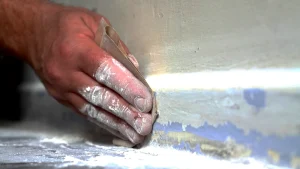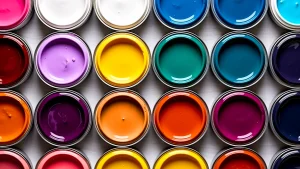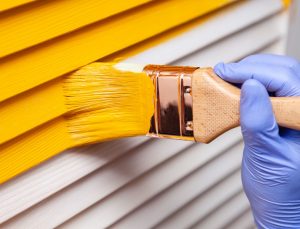Surface preparation is the cornerstone of any successful painting project, playing a crucial role in determining the final outcome.
Whether you’re painting an interior wall or an exterior facade, proper preparation ensures that the paint adheres well, providing a smooth, durable finish. Neglecting this essential step can lead to disappointing results, including premature peeling and cracking.
Investing time and effort in surface preparation not only enhances the appearance of the painted surface but also extends its lifespan.
By thoroughly preparing the surface, you create a stable foundation that allows the paint to perform at its best, ensuring that your work stands the test of time.
What is Surface Preparation?
Surface preparation involves a series of steps designed to ready a surface for painting. This process varies depending on whether the surface is interior or exterior but generally includes cleaning, sanding, repairing, and priming.
Each step is tailored to address the specific needs of the surface, ensuring that it is smooth, clean, and free from imperfections.
Interior surface preparation often involves addressing issues like stains, cracks, and nail holes, while exterior preparation may focus on removing dirt, mould, and old paint.
Regardless of the type, thorough preparation is vital to achieve a flawless finish that enhances the overall aesthetic of the space.

Key Steps in Surface Preparation
The first step in surface preparation is cleaning the surface to remove any dirt, grease, or old paint that could interfere with paint adhesion.
Once the surface is clean, any imperfections, such as cracks or holes, should be repaired using appropriate fillers. This creates a smooth and even base, essential for a professional finish.
Next, the surface must be sanded to smooth out any rough spots and to provide a key for the paint to adhere to.
Finally, applying a primer is crucial, especially on bare surfaces or those with significant repairs. Primer helps to seal the surface, enhancing the paint’s durability and ensuring a consistent finish.

The Impact of Poor Surface Preparation
Failing to properly prepare a surface before painting can lead to a host of problems. Without thorough cleaning and sanding, paint may not adhere properly, resulting in peeling or blistering.
Over time, this can lead to unsightly patches and a need for premature repainting, increasing maintenance costs.
Moreover, neglecting surface preparation can result in an uneven finish, with visible imperfections detracting from the overall look.
In the long run, poor preparation not only affects the appearance but also reduces the longevity of the paintwork, leading to frequent touch-ups and additional expenses.
Professional Techniques for Optimal Results
Professionals use a range of specialised tools and materials to ensure the best possible results during surface preparation.
High-quality sanders, fillers, and primers are standard in a professional’s toolkit, enabling them to achieve a finish that is smooth and long-lasting. Their expertise in choosing the right products for different surfaces is key to the success of the project.
Different surfaces require different preparation techniques. For example, wood may need to be sanded and primed to prevent moisture damage, while plaster might require patching and sealing.
A professional’s experience and attention to detail ensure that each surface is treated appropriately, resulting in a superior finish that stands the test of time.

Conclusion
In conclusion, surface preparation is a critical aspect of professional painting that should never be overlooked. Proper preparation ensures that the paint adheres effectively, leading to a finish that is not only visually appealing but also durable.
Skimping on this essential step can result in a range of issues, from poor paint adhesion to a shorter lifespan for the paintwork.
By investing time in thorough surface preparation, whether for an interior or exterior project, you set the foundation for a successful, long-lasting finish.
Professional painters understand the importance of this process, utilising their expertise and the right tools to deliver results that exceed expectations.
Ultimately, meticulous preparation is key to achieving a flawless, professional-quality paint job that enhances and protects your surfaces for years to come.







